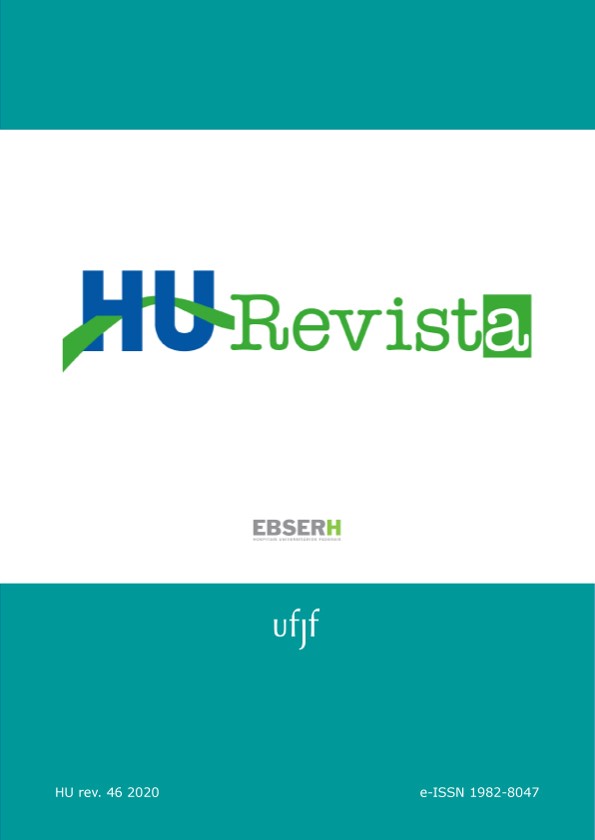The use of the Summaê active methodology in an undergraduate dentistry course: experience report
DOI:
https://doi.org/10.34019/1982-8047.2020.v46.29093Keywords:
Problem-Based Learning, Education, Dental, MethodologyAbstract
Introduction: The use of active methodologies has become an increasingly efficient tool in undergraduate courses. Its ability to transform the classroom into a motivating environment makes the student take a leading role in the teaching-learning process, making the transmission of learning more dynamic and practical. Objective: To describe the application of an active teaching-learning methodology, called Summaê, in students of the Federal University of Juiz de Fora, Governador Valadares Campus (UFJF/GV). Experience report: The activity was developed with students from the Academic League of Maxillofacial Surgery and Pathology. Divided into pairs, the students had to make a creative video with a question that covered the academic league's areas of interest. With each video, the question presented was answered on a sheet. The answers were later corrected by a panel of teachers who were also responsible for judging the videos on display. The event environment was previously prepared with a specific theme, and students and teachers were required to wear hats. The best hats, videos and student responsible for the most hits were awarded. Conclusion: The application of a methodology that allows broad student participation in the educational process, coupled with the creation of the playful environment, facilitated the teaching-learning process and led the students to be transported to a different atmosphere from the traditional classroom making the environment more playful, relaxed and less formal.
Downloads
References
Pivetta HMF, Vogt MSL, Badaro AFV. Metodologia do ensino superior: uma experiência na pós-graduação lato sensu em fisioterapia. Cad Edu Saúde. 2014; 1(2):85-94.
Santos WP. Uma proposta lúdica sobre o Summaê no IFG: Campus Luziânia [Dissertação]. Catalão: Universidade Federal de Goiás; 2018.
Fragelli RR, Fragelli TBO. Summaê: um espaço criativo para aprendizagem. Rev Diálogo Educ. 2017; 17(52):409-30.
Cropley DH. Promoting creativity and innovation in Engineering education. Psychol Aesthet Creat Arts. 2015; 9(2):161-71.
Gray P. Free to learn: why unleashing the instinct to play will make our children happier, more self-reliant, and better students for life. New York: Basic Books; 2013.
Jang H, Reeve J, Deci E. Engaging students in learning activities: it is not autonomy support or structure but autonomy support and structure. J Educ Psychol. 2010; 102(3):588.
Reyes MR, Brackett MA, Rivers SE, White M, Salovey P. Classroom emotional climate, student engagement, and academic achievement. J Educ Psychol. 2012; 104(3):700-12.
Patrick H, Kaplan A, Ryan AM. Positive classroom motivational environments: convergence between mastery goal structure and classroom social climate. J Educ Psychol. 2011; 103(2):367.
Diesel A, Baldez ALS, Martins SN. Os princípios das metodologias ativas de ensino: uma abordagem teórica. Revista Thema. 2017; 14(1):268-87.
Sobral FR, Campos C. The use of active methodology in nursing care and teaching in national productions: an integrative review. Rev Esc Enferm USP. 2012; 46(1):202-11.
Freitas VP, Carvalho RB, Gomes MJ, Figueiredo MC, Faustino-Silva DD. Mudança no processo ensino-aprendizagem nos cursos de graduação em odontologia com utilização de metodologias ativas de ensino e aprendizagem. RFO. 2009; 14(2):163-67.
Reul MA, Lima ED, Irineu KN, Lucas RSCC, Costa EMMB, Madruga RCR. Metodologias ativas de ensino aprendizagem na graduação em Odontologia e a contribuição da monitoria: relato de experiência. Rev ABENO. 2016; 16(2):62-8.
Downloads
Published
How to Cite
Issue
Section
License
Cessão de Primeira Publicação à HU Revista
Os autores mantém todos os direitos autorais sobre a publicação, sem restrições, e concedem à HU Revista o direito de primeira publicação, com o trabalho licenciado sob a Licença Creative Commons Attribution que permite o compartilhamento irrestrito do trabalho, com reconhecimento da autoria e crédito pela citação de publicação inicial nesta revista, referenciando inclusive seu DOI.









